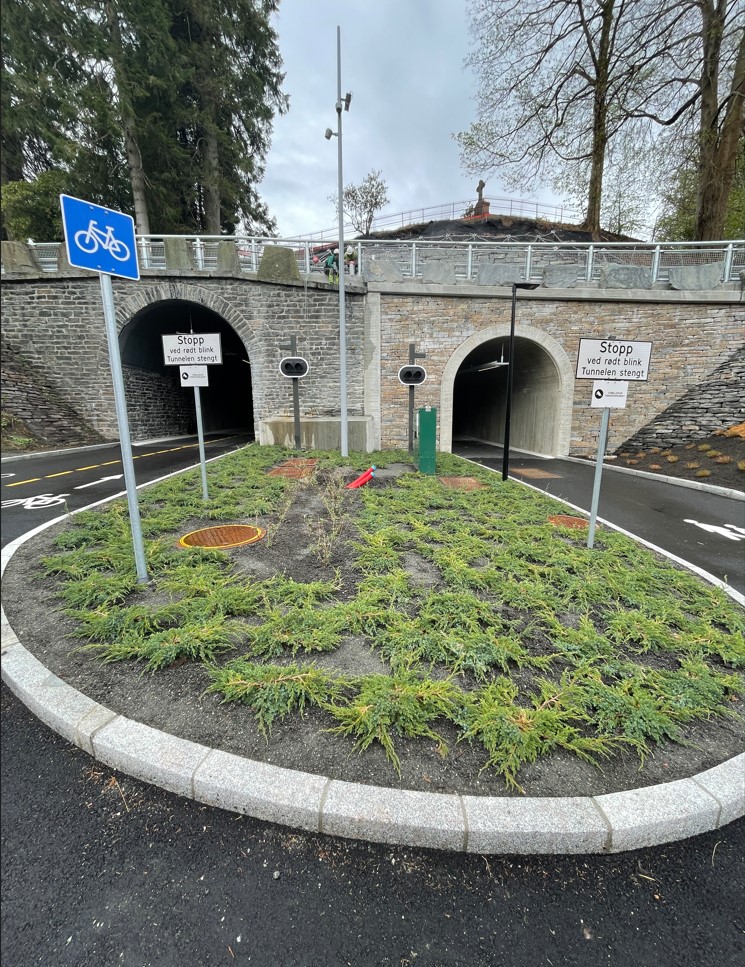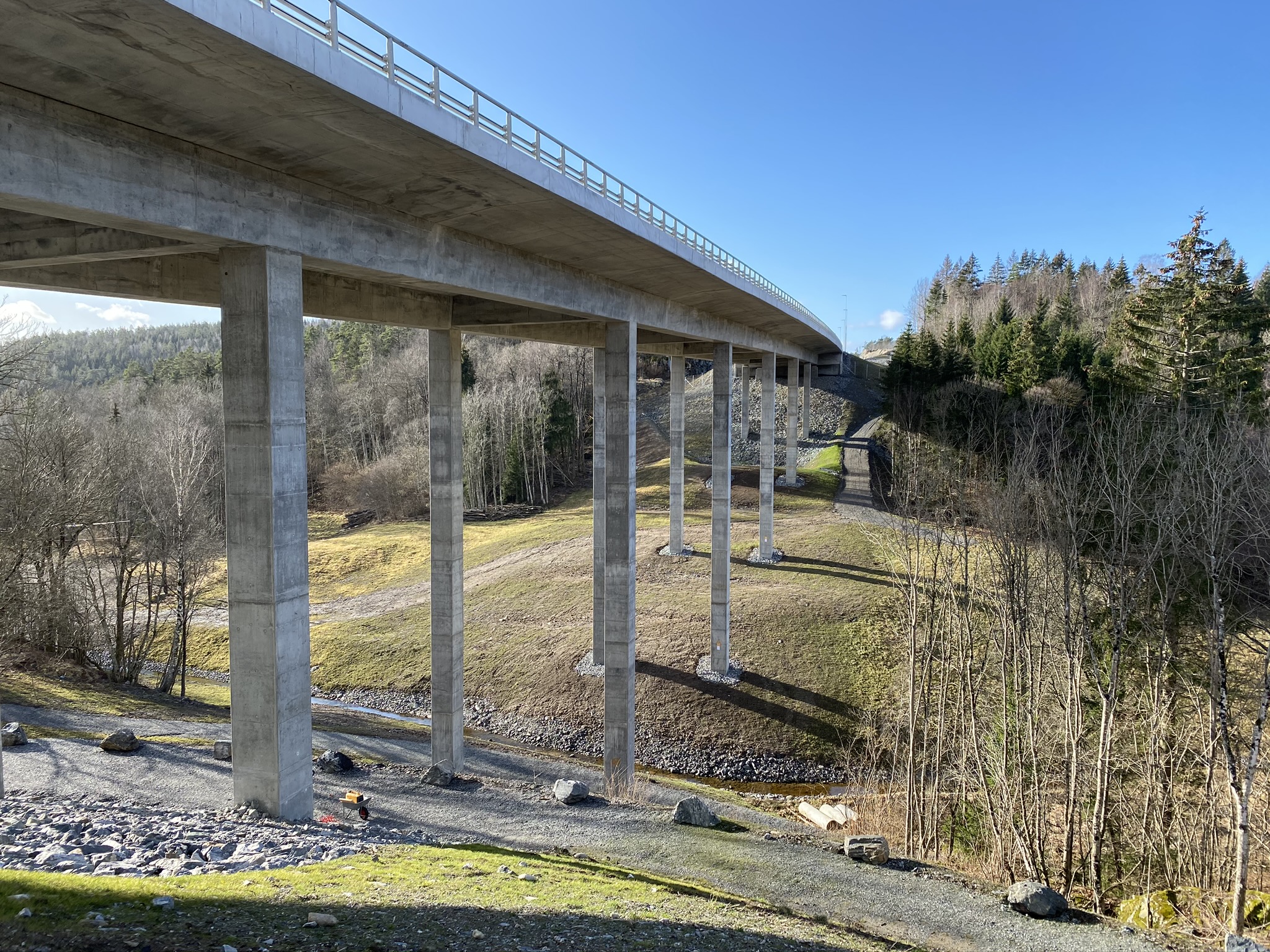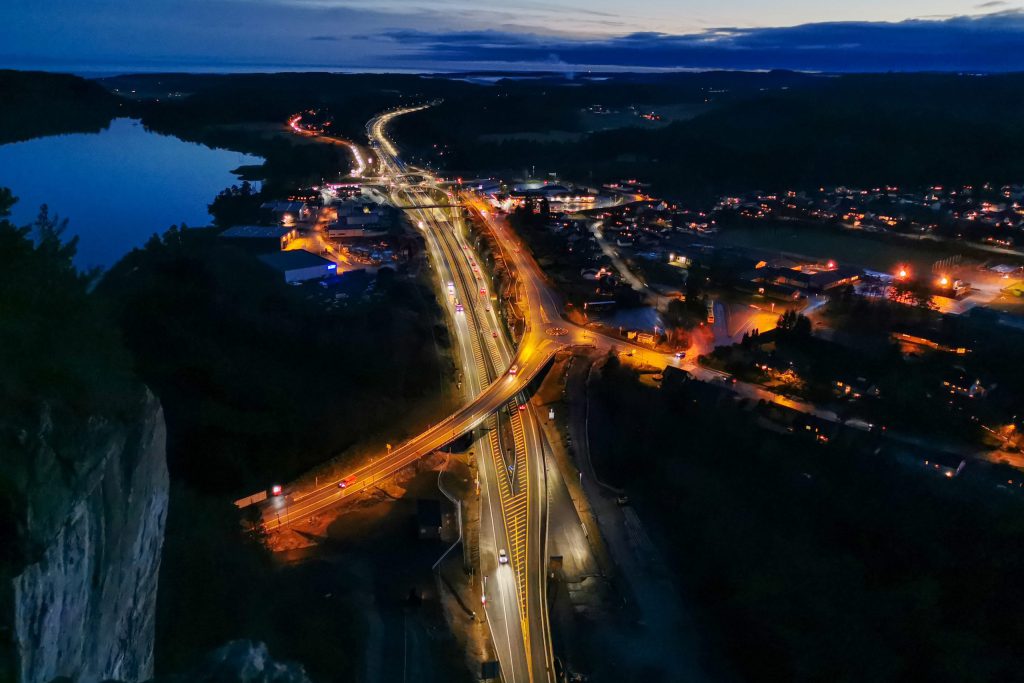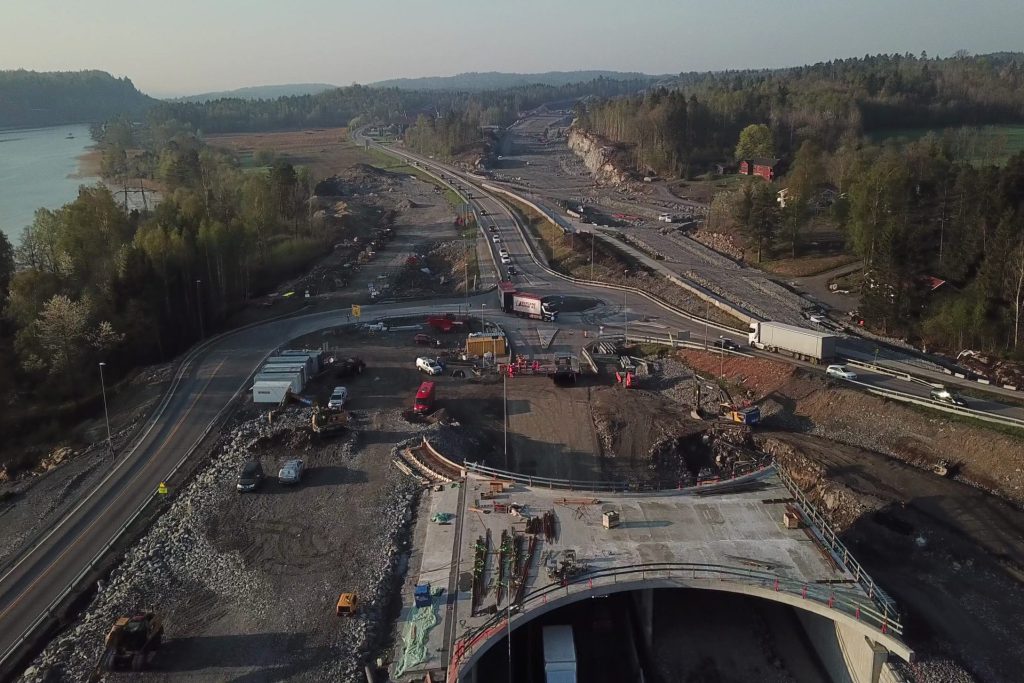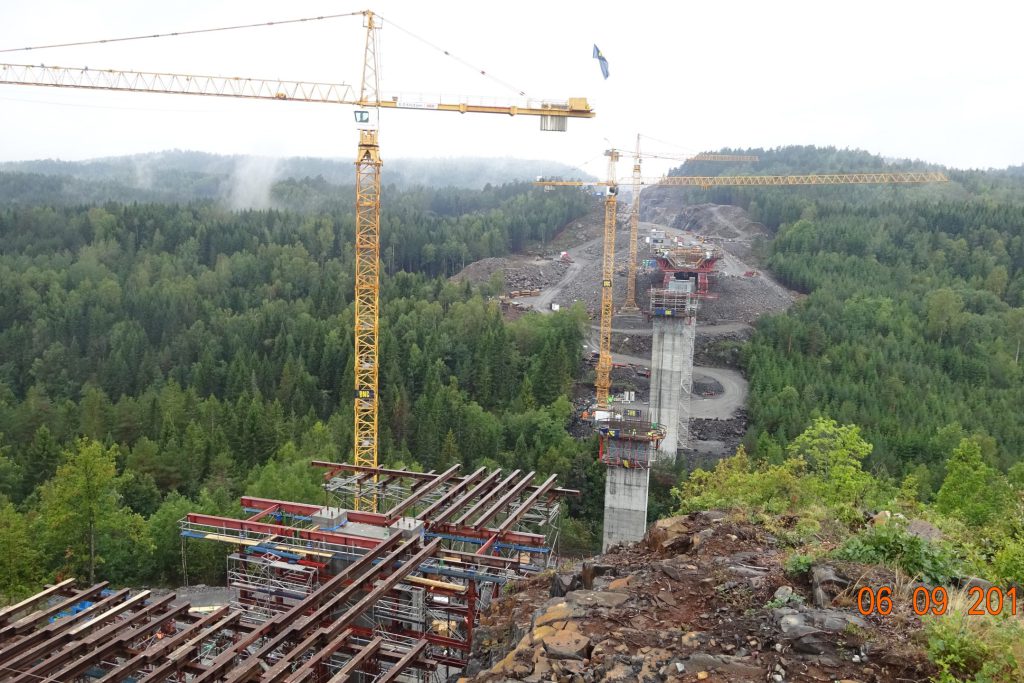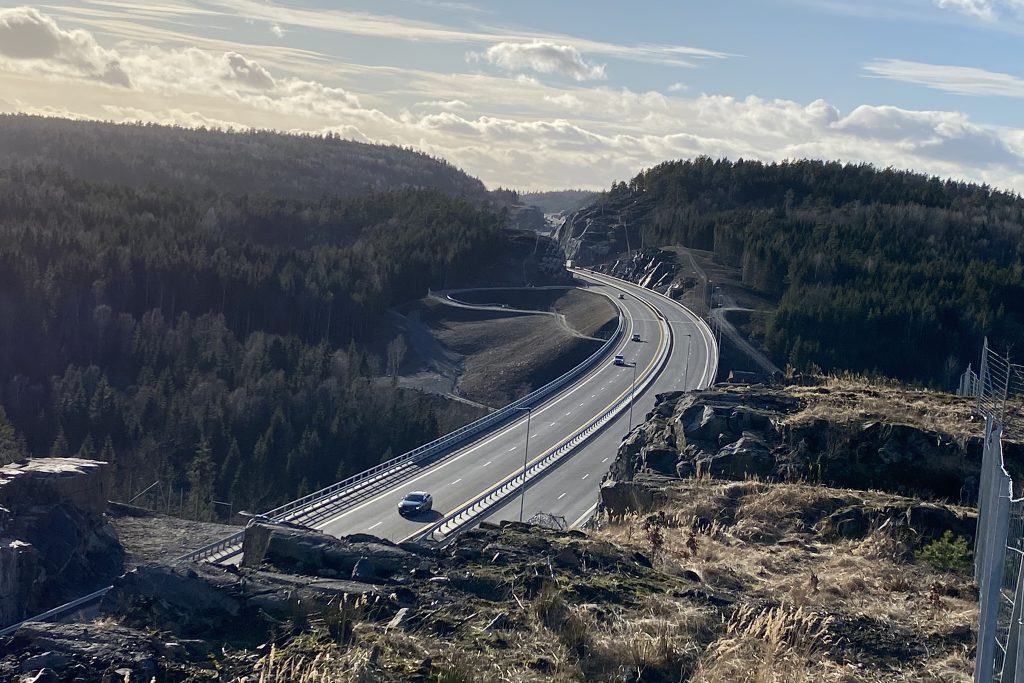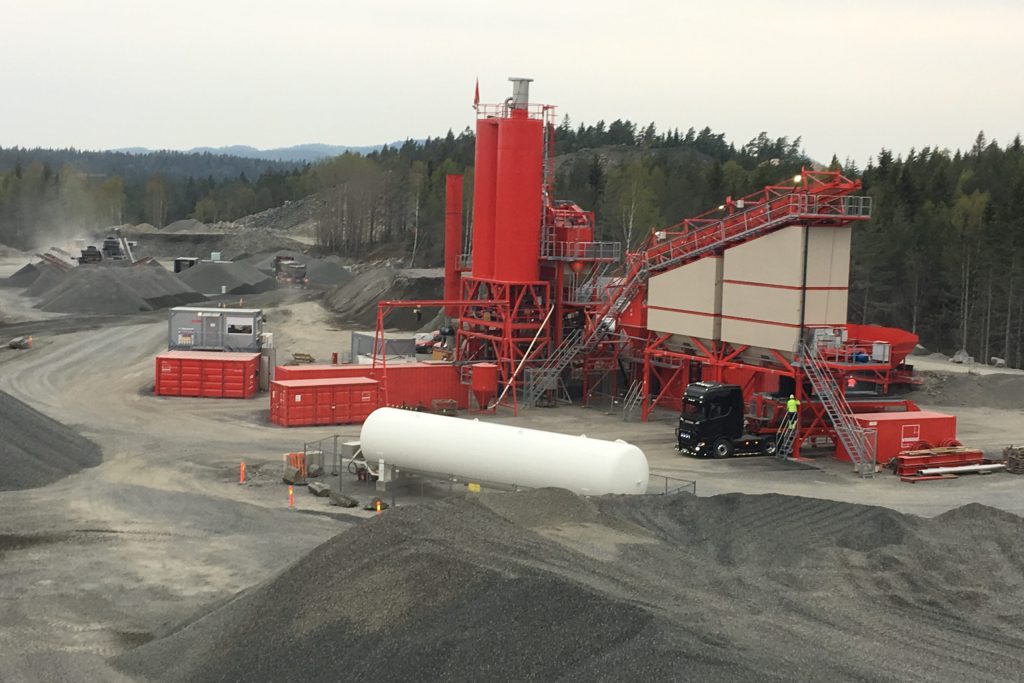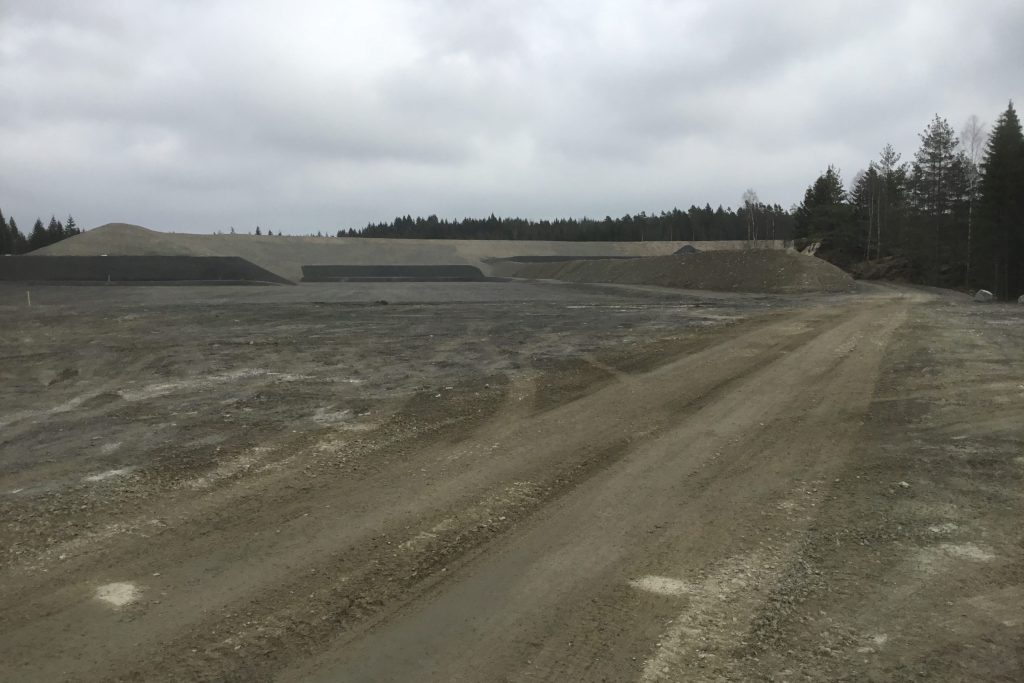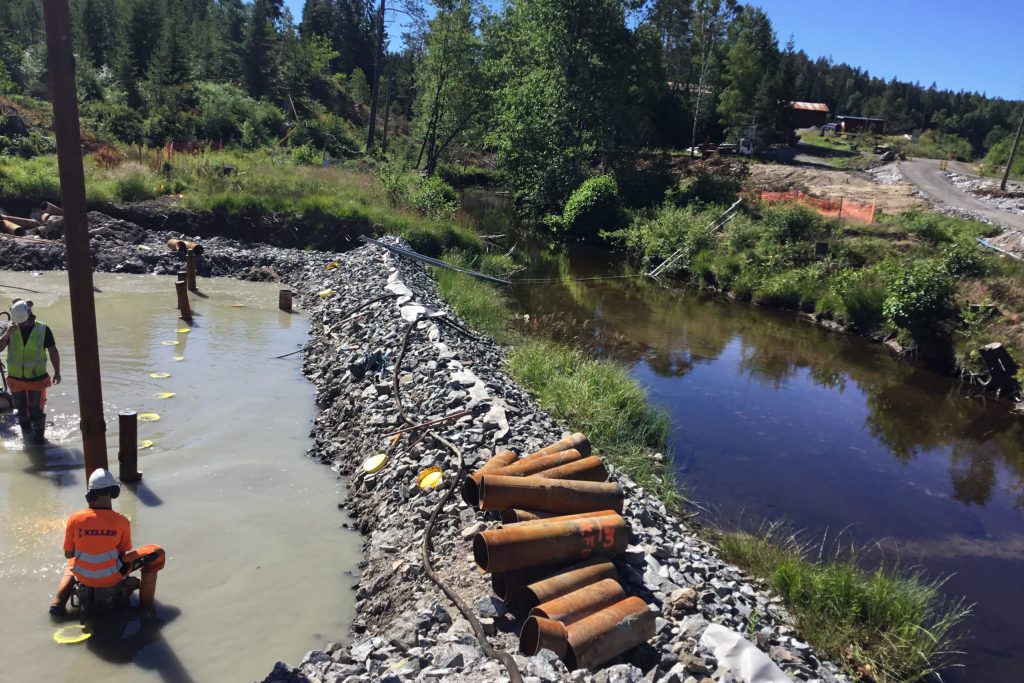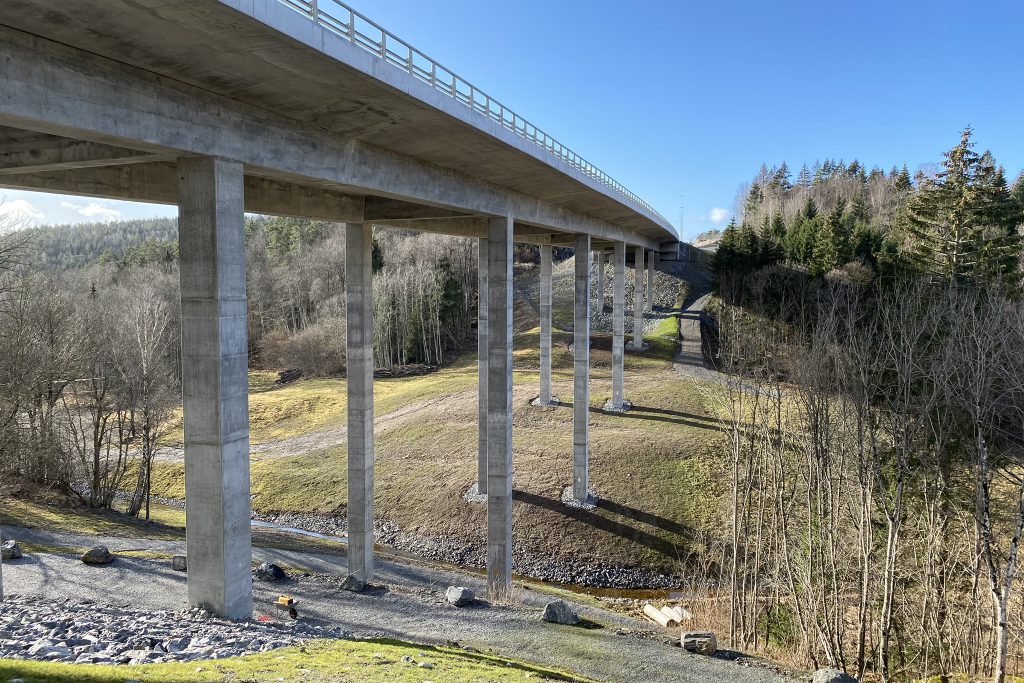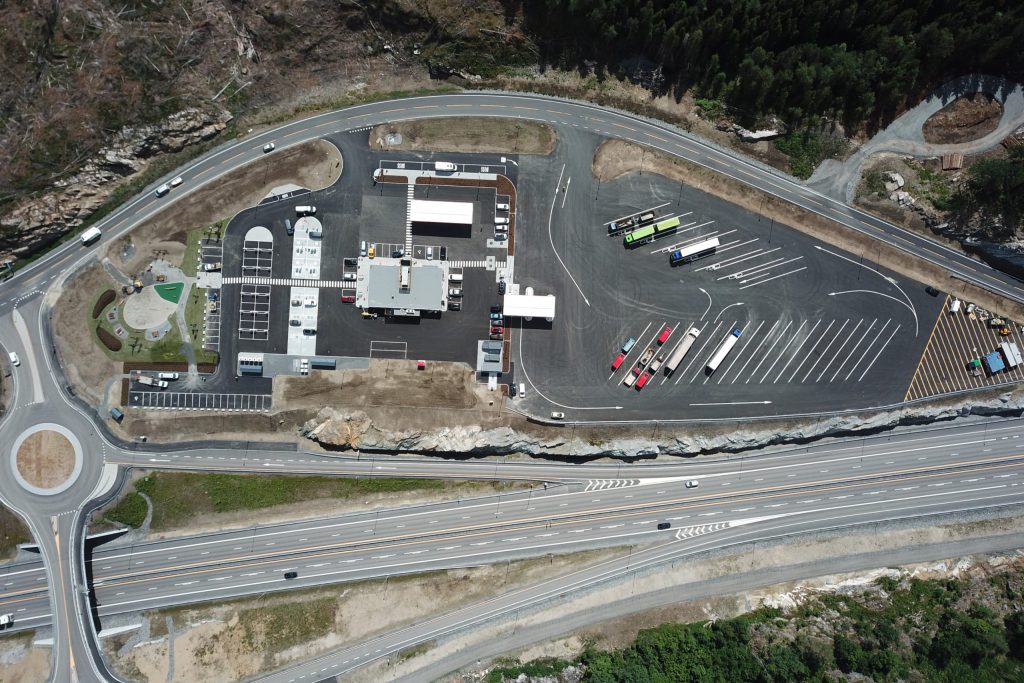CEEQUAL Excellent (75.03%) – Whole Project Award
Version 6, February 2022 | Telemark, Norway
Assessor: Espen Hoell, Nye Veier AS
Verifier: Catherine Arotsky, Sustainability2
Client: Nye Veier AS
Designer: COWI AS
Contractor: Haehre AS
Project Summary
The project is a 16.5km four-lane motorway in Telemark, Norway with a 110 km/hour speed limit. The state-owned company, Nye Veier AS, overtook the responsibility to build the project in 2016. The project includes the construction of two major intersections with crossover bridges, nine four-lane bridges, two wildlife crossing constructions, and several minor constructions.
Project targets:
- Reduction in travelling times from 16 to 9 minutes.
- Reduction of number killed and seriously injured in road traffic. The new E18 shall have an accident frequency lower than 0.02.
- Reduce greenhouse gas emissions in line with Norway’s climate goals and limit the loss of biodiversity. Reduction of CO2 emissions by 20% during the construction phase compared to baseline estimate.
- A net benefit of 1.32 per invested NOK, based on a cost framework 20% below the baseline total cost estimate of NOK 4,505 billion.
- An increased road user benefit on annual basis in 2020 compared with 2016 of NOK 195 million.
- In the early phases (2010-2013), the project location was chosen to avoid nuisance to living and agricultural areas and was therefore placed mostly through forested areas, partly including locations of high ecological value. Thus, the project made efforts to reduce encroachment in these areas, although some conflict could not be avoided.
All measurable project goals were achieved, and some have been exceeded. We successfully minimized the impact on areas with high ecological value and achieved a climate gas reduction of more than 20% in the construction phase.
Gallery
Achievements
Management
Through thorough assessments in the planning phases, the project location was selected to minimise adverse impacts on biodiversity, cultural heritage, natural resources, living areas, and outdoor life. This, in combination with extensive contract requirements and the Best Value Procurement method, resulted in a score close to 90% in this category.
Resilience
The project conducted thorough risk assessments including future needs and traffic growth as well as climate change and planned for resilience of the assessed risks. It was designed for a 200-year flood event with 50% climate change addition. A 100% score on these issues was very satisfactory.
Communities and Stakeholders
The Norwegian Plan and Building Act regulate to a high degree the consultation with local stakeholders. The project paid significant attention to conduct open information meetings and open office days where the stakeholders could address their concerns. In addition, we arranged supplier days with speed dating allowing contractors and suppliers to present themselves and encouraged local firms to bid for their services. We also addressed the wider economic benefits to society as result of the project. These actions resulted in close to 90% score in the category.
Land Use and Ecology
In the early phases of the project (2010-2013), the location was chosen to avoid nuisance in living and agricultural areas. It was therefore placed mostly through forested areas, partly including locations of high ecological value. The project made efforts to reduce encroachment in these areas by intervention limitation, although some conflict could not be avoided. In addition, we prepared compensation areas for the threatened species Andrena marginata found in the construction area. A score of more than 80% was achieved with this strategy, which was satisfactory.
Landscape and Historic Environment
A wide range of stone age settlements were identified within the project location. However, there were no cultural remains of a newer age affected by the project. All stone age settlements were excavated before start-up of the constructions. The excavations resulted in a comprehensive scientific textbook. We achieved close to 80% score on these issues but realise that we could have improved by better information to the local community.
Pollution
With a large construction project like this with more than 30 streams and rivers it was difficult to avoid temporary pollution, although significant work was done to prevent it including using temporary dams and continuous measurements with alarm limits. All waterways (streams, rivers, and lakes) were monitored before, during, and after construction. We had ongoing monitoring two years after the project completion and see now that the temporary effects are fading away and that there has been no permanent damage. We assume the score of 62% in this category could have been raised if the results of after construction monitoring had been available during the assessment.
Resources
We achieved a climate gas reduction of more than 20% in the construction phase compared to the baseline. This was accomplished by reducing bridge lengths, using internally produced stone for road construction and embankments at bridges, using locally produced cement for all concrete constructions, using mobile and gas fired asphalt works inside the construction area, and using materials with EPD requirements for low CO2 emissions. However, we recognise that a higher score in this category than close to 55% could have been achieved with more attention to material resource efficiency, circular economy, PAS 2080, and water use.
Transport
Regarding construction networks we achieved a score close to 85% witch we find satisfactory. However, we realise that the project has not documented well enough its planning and implementation regarding construction materials and workforce travel planning, thus there was potential for improvement in this category.
Financial Benefits
Did the use of CEEQUAL deliver any financial benefits?
The CEEQUAL assessment was initiated when the construction phase was completed, so although CEEQUAL did not directly provide financial benefits, significant cost reductions were achieved through good planning and project management. The use of the Best Value Procurement method, a bonus reward for improvements during detailed design and the selection of turnkey contractor, resulted in a 20% reduction of the maximal construction cost set for the project. However, the use of CEEQUAL helped raise our awareness of the benefits, both economic and others, that can be achieved by using CEEQUAL from the early planning phase.
In your view, has CEEQUAL represented value for money?
Yes, the use of CEEQUAL has improved our attention to documentation of what we do, and the importance of evaluation, planning, and implementation of various issues. It has also been valuable to document what we have done in this project. Additionally, it will help us to improve our sustainability performance, reduce carbon emissions, and increase the socio-economic benefits in other ongoing and upcoming projects, which all are among Nye Veiers corporate targets.
Metrics
Available information from environmental and climate gas emission accounting etc.:
Carbon emissions:
- Construction 61.116 tonnes CO2e reduction (~20% reduction from baseline estimate).
- Operation 40 years 18.729 tonnes CO2e reduction (~30% reduction from baseline estimate).
Diesel:
- 12 mill l, with 7% biodiesel content.
Electricity:
- 1.7 mill kWh in total.
Excavated material:
- Bedrock 4.1 mill. fixed m3, 1.1 mill. m3 reused in construction.
- Soil: 1.4 mill m3, 0.35 mill m3 reused on the project.
Recycled materials:
- Armouring steel 5820 tonnes.
Locally supplied materials:
- Concrete ~70,000 m3 (environmentally friendly cement (Norcem BV45 SV standard) locally produced, all elements of concrete were locally produced within 15 km from project location).
- Asphalt: total production ~165,000 tonnes locally produced, ~ 80% of filler locally produced within production area ~ 132,000 tonnes.
- Building blocks for retaining walls: ~3500 m2, produced 90 km from construction site.
- Steel lids for drainage sumps in total ~33,000 pieces produced with electric energy ~ 50 from construction site.
- Embodied water 15% of concrete volume 10,500 m3
CEEQUAL’s Role
What were the main challenges for the project and how were these overcome?
Limitations of site placement resulted in some impacts on local biodiversity, e.g. within the facility a population of the red-listed bee Andrena marginata, also called the small scabious mining bee, was found. To maintain the population, sand mounds were placed in several places near the previous locations and 8000 devil’s-bit, on which the bees depend, were planted.
What were the drivers and perceived benefits for undertaking a CEEQUAL assessment on this project?
The driver for undertaking a CEEQUAL assessment on this project was to document what had been done and how Nye Veier can improve in terms of sustainable infrastructure development.
How did the use of CEEQUAL influence the outcomes of the project? What was done differently because of the CEEQUAL process?
The CEEQUAL assessment for this project was done after project completion. The major outcome was a documentation and independent evaluation of what had been done and learning what can be done better in future projects.
What elements of this project highlight best practice and innovation?
The most significant examples of best practice and innovation in the project were:
- Reducing concrete constructions using locally produced surplus of bedrock material.
- Producing crushed stone for construction of the road base on site.
- Using gas fired mobile asphalt works within the construction area.
CEEQUAL Case Studies
Browse the latest case studies from CEEQUAL
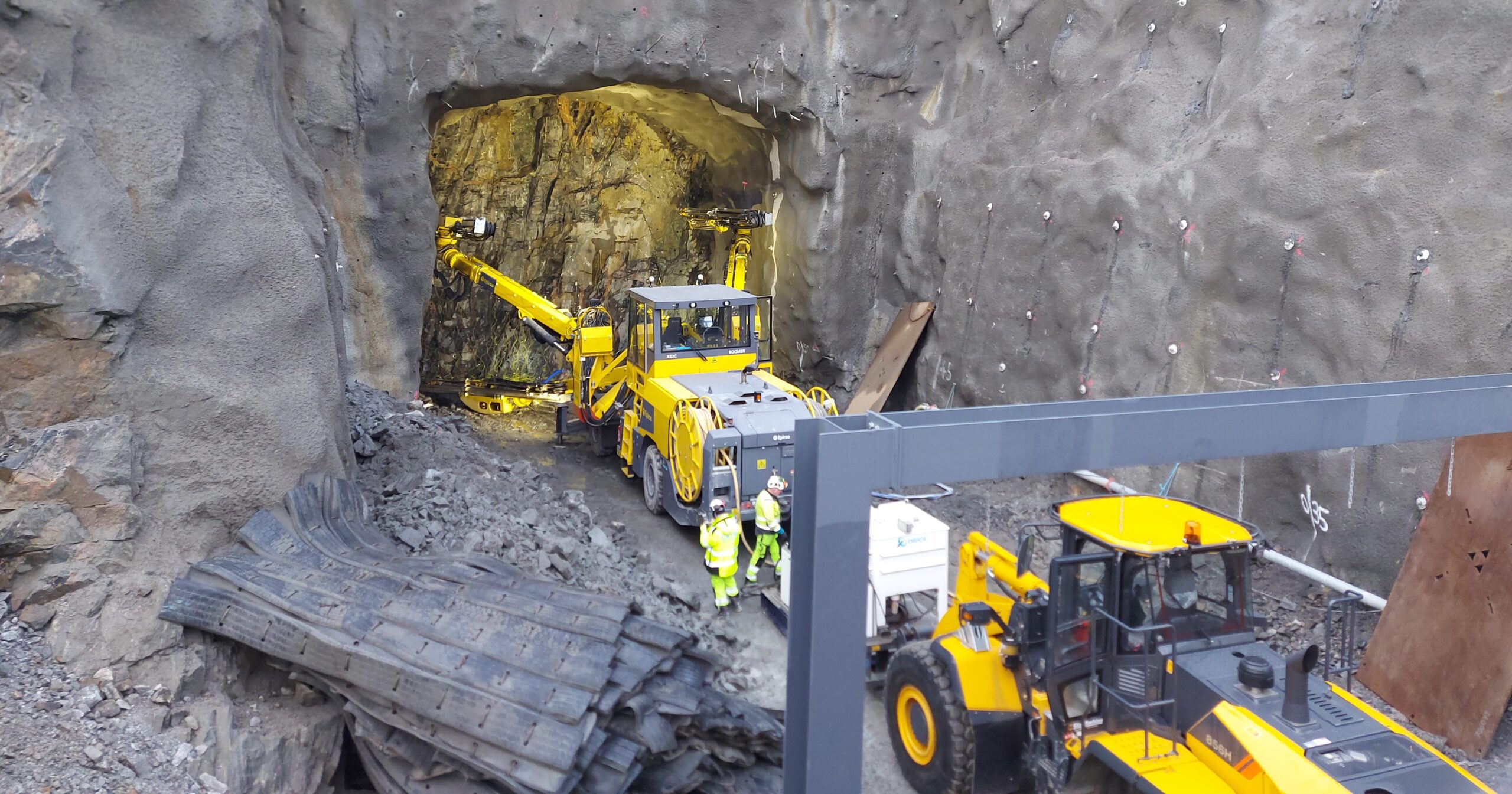
Stockholm Metro Nacka project awarded Excellent
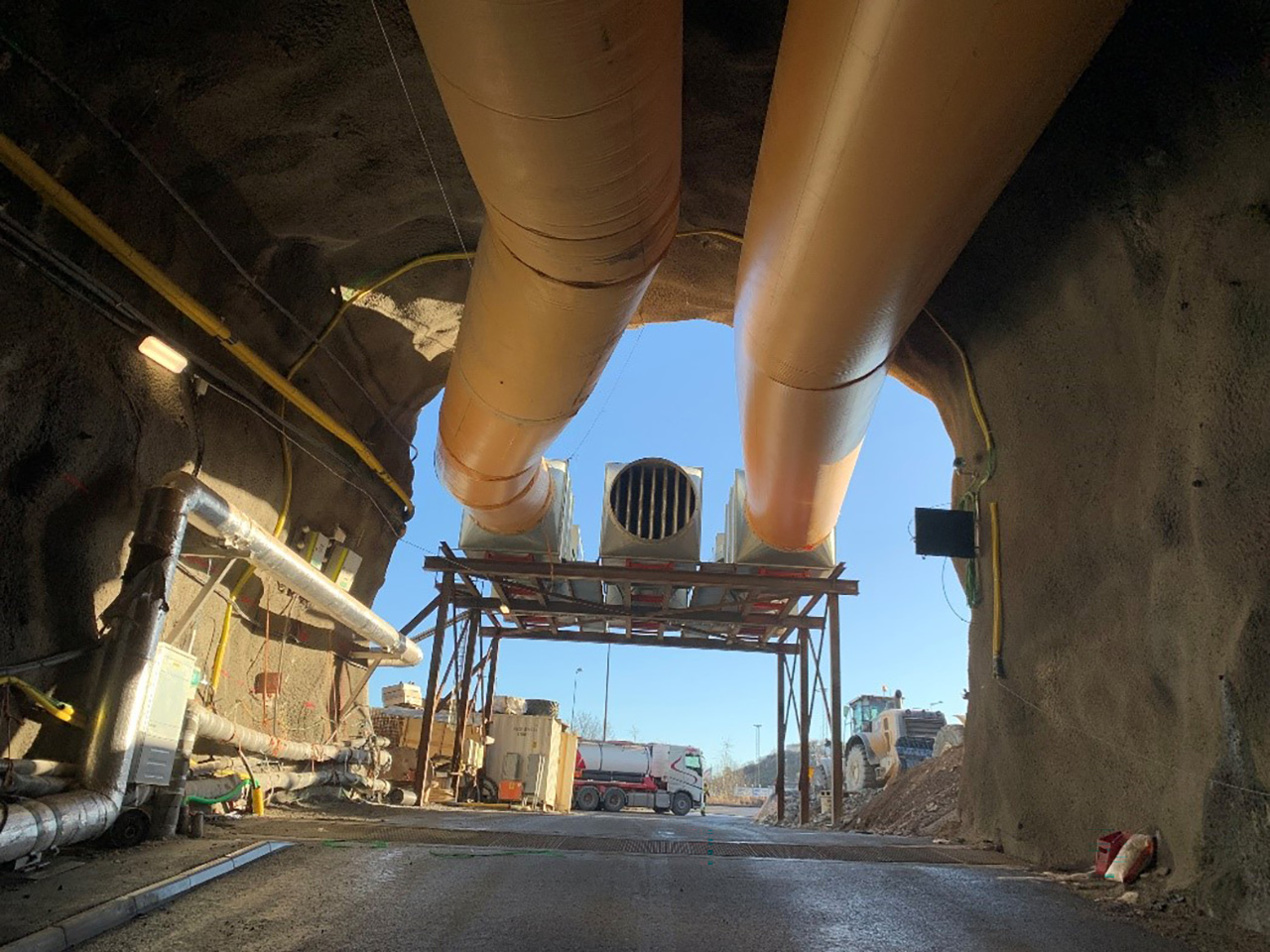
Stockholm Metro Sofia access tunnel a BREEAM Infrastructure success
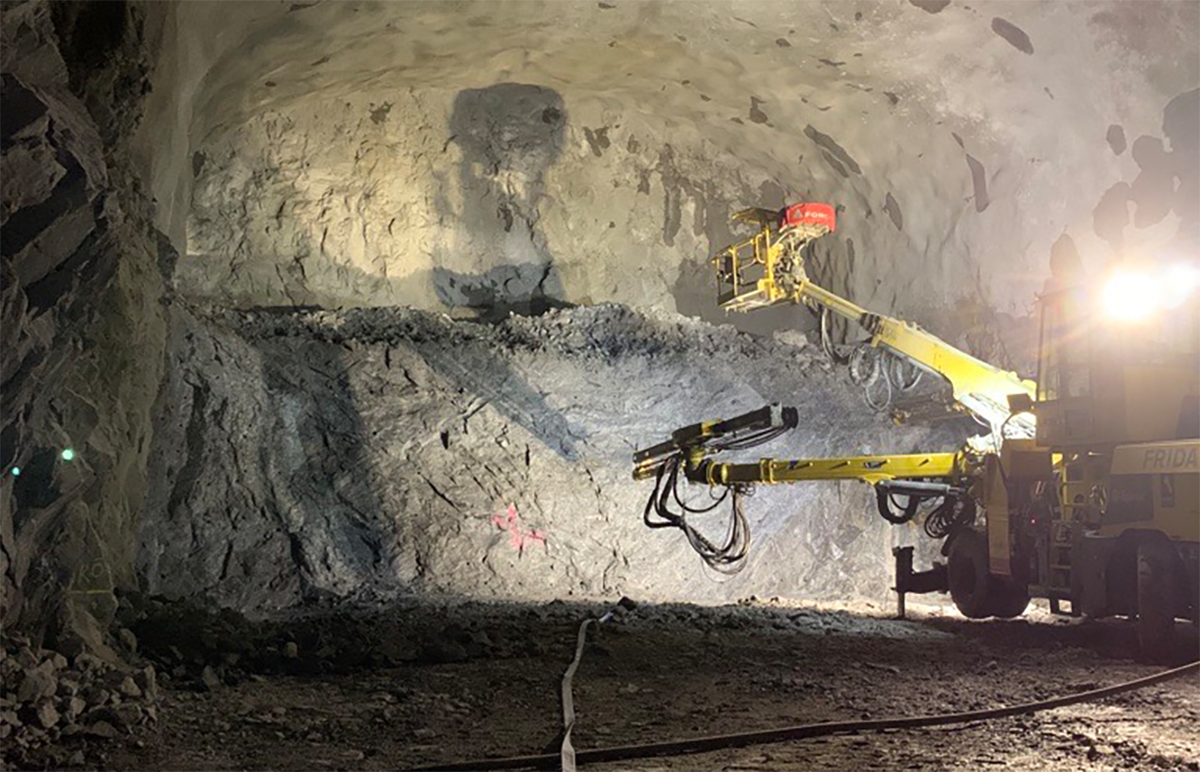
Stockholm Extended Metro access tunnel Sundstabacken achieves CEEQUAL Excellent rating
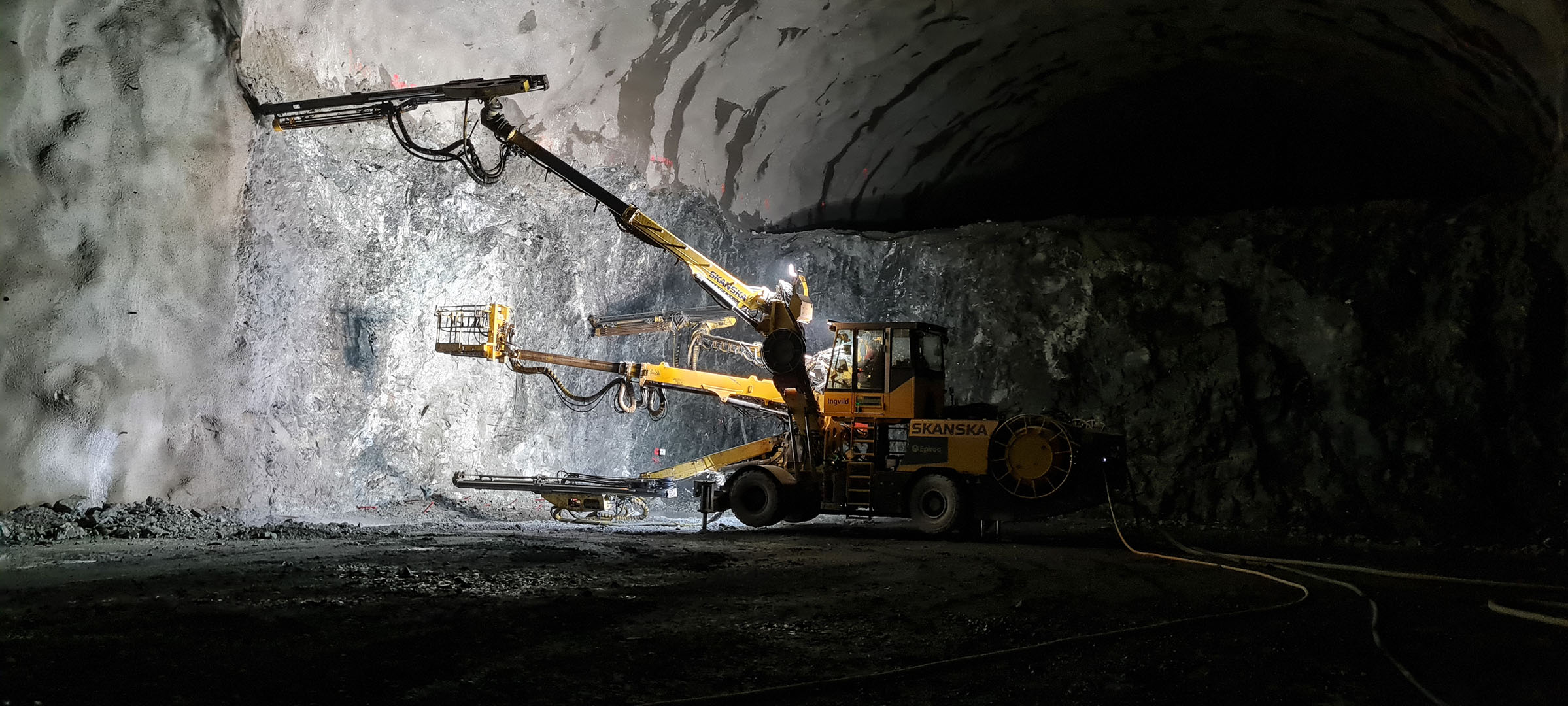
Preparatory works for the new water treatment system in Oslo achieves BREEAM Infrastructure Excellent rating
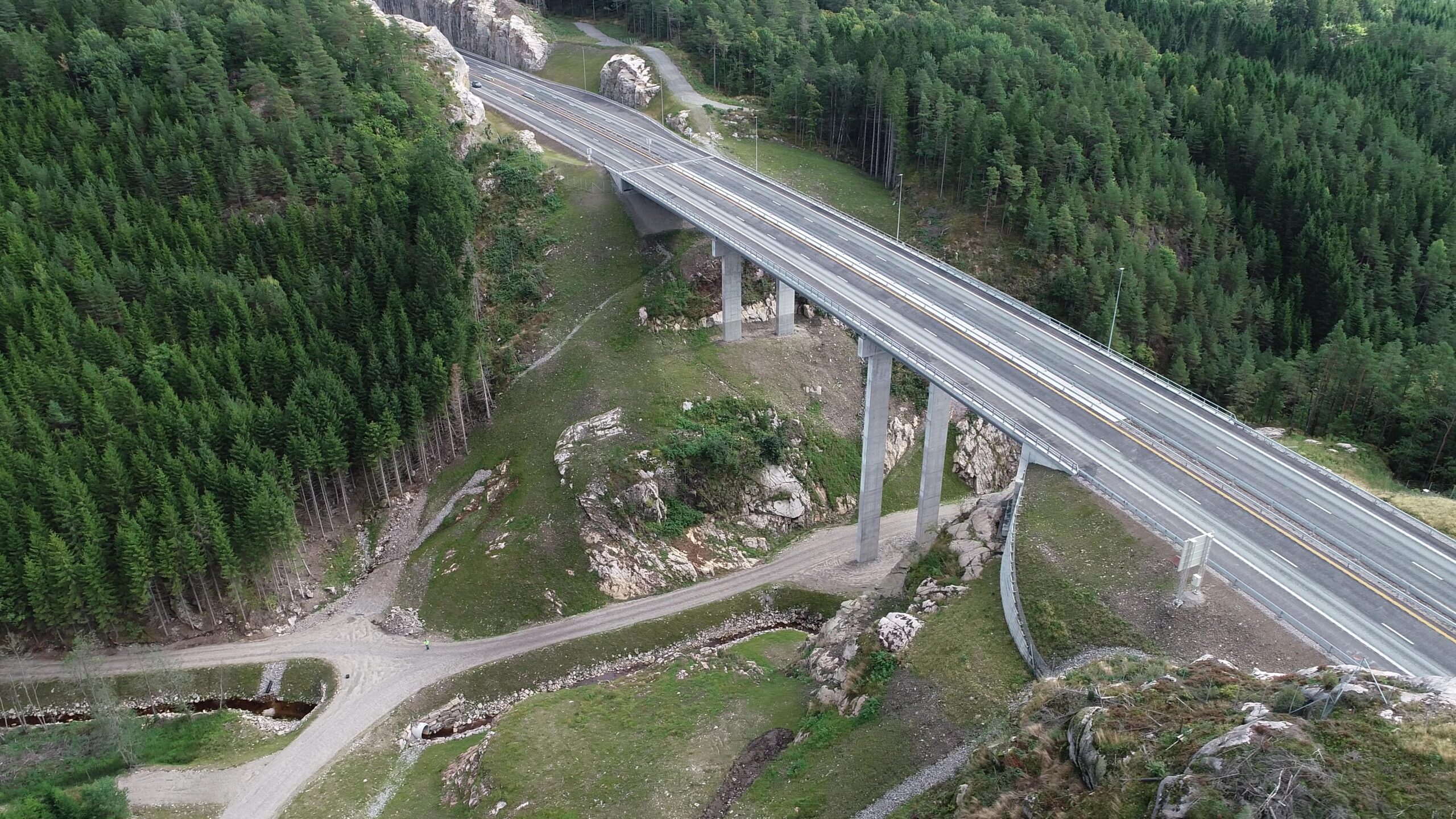
E39 Mandal øst – Mandal
